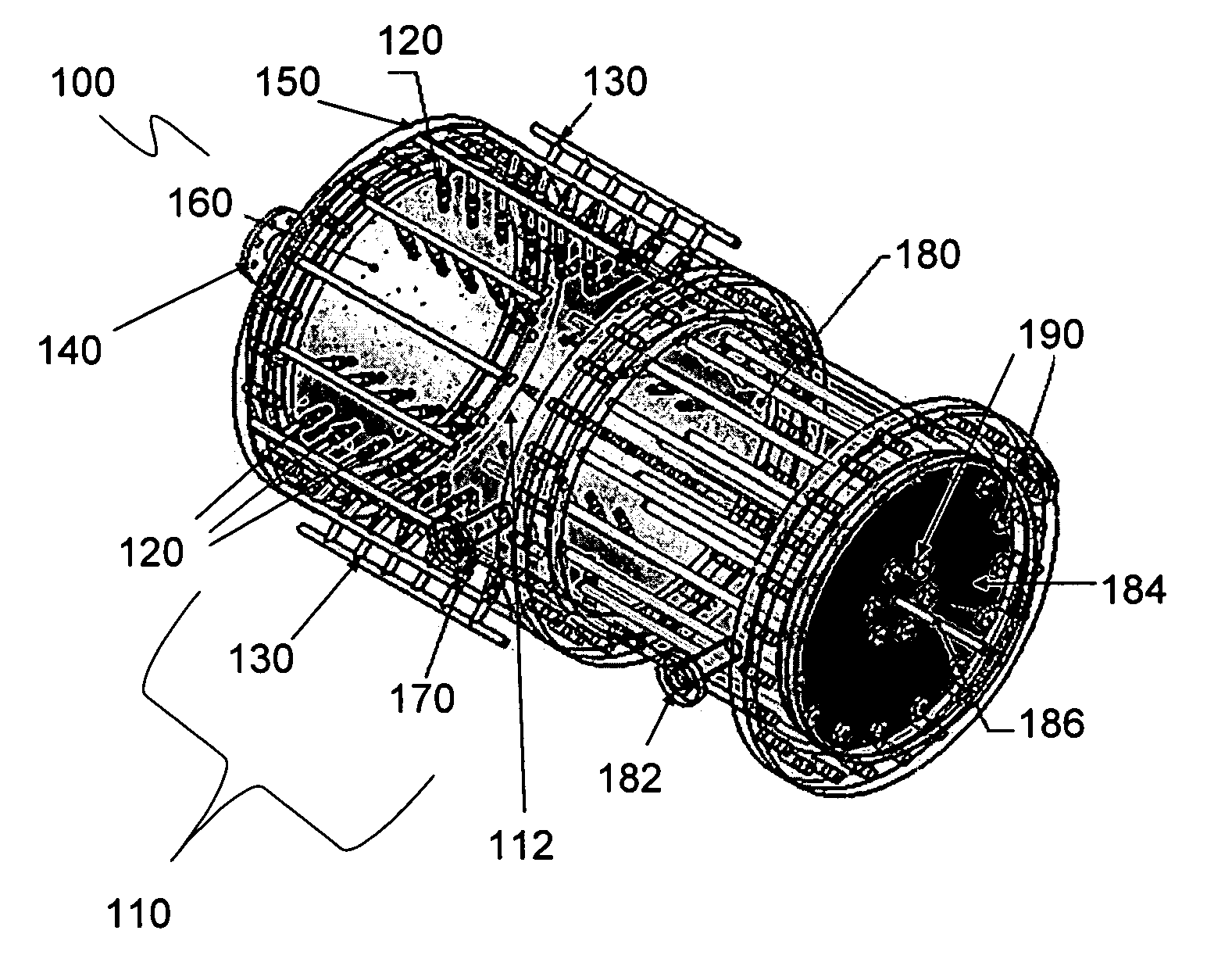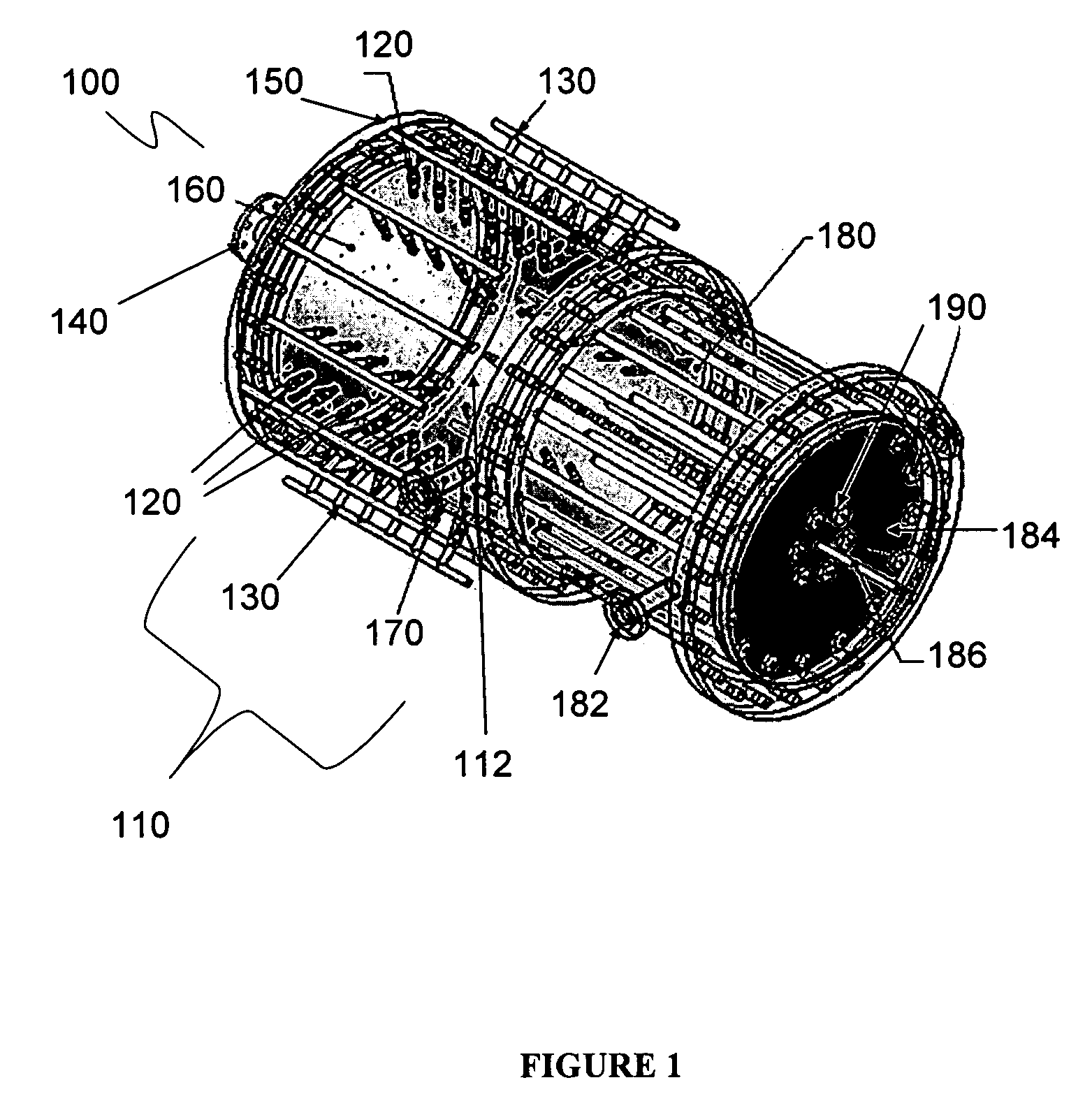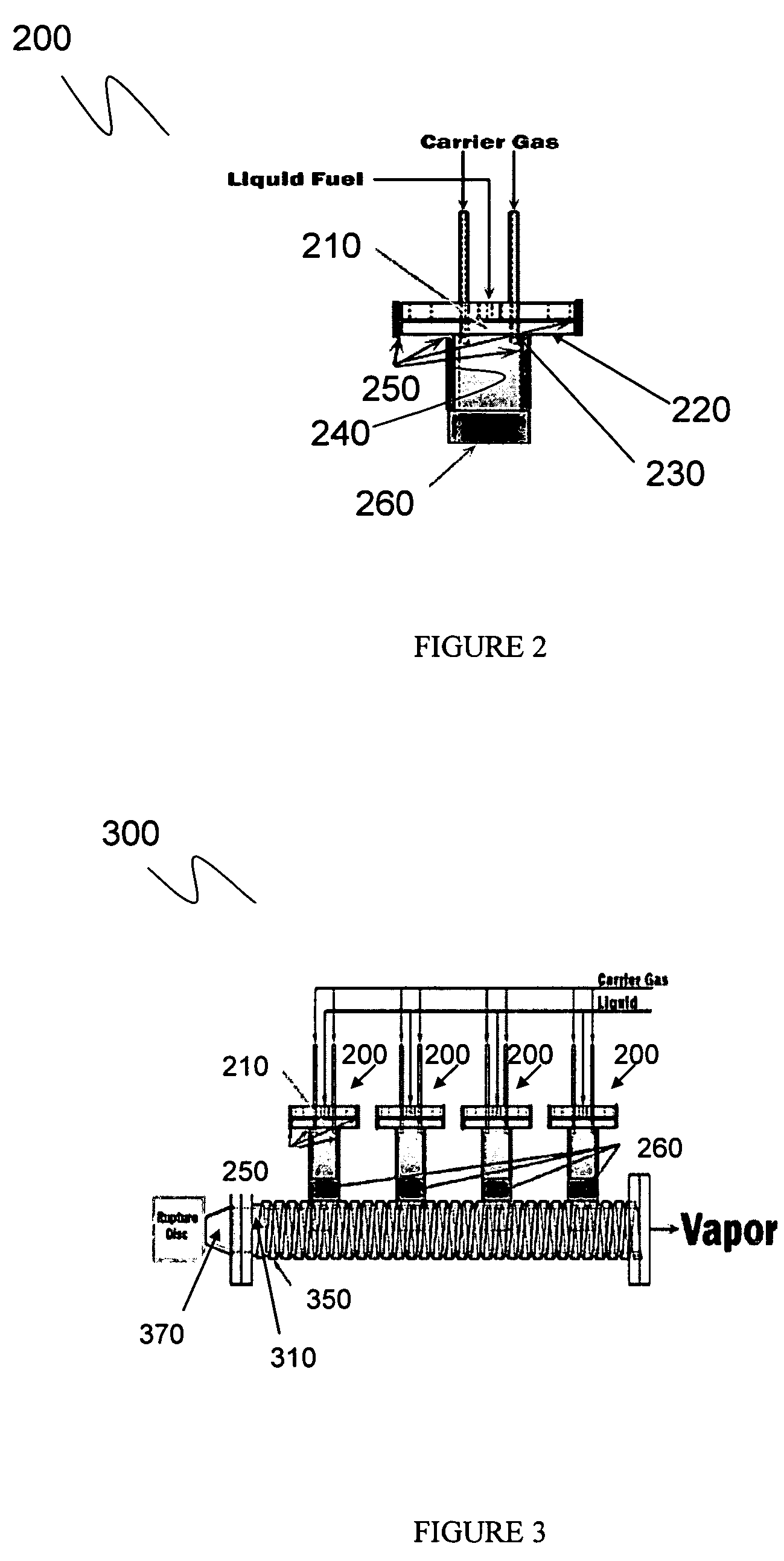Method and apparatus for conditioning liquid hydrocarbon fuels
a technology of liquid hydrocarbon fuel and conditioning method, which is applied in the direction of mechanical equipment, lighting and heating equipment, machines/engines, etc., can solve the problems of high emissions and achieve the effects of preventing heat loss, reducing emissions, and enhancing the vaporization process
- Summary
- Abstract
- Description
- Claims
- Application Information
AI Technical Summary
Benefits of technology
Problems solved by technology
Method used
Image
Examples
Embodiment Construction
[0009] Various embodiments of methods and apparatuses for conditioning liquid fuels are discussed below. Specific details are set forth in order to provide a thorough understanding of the present invention. The specific embodiments described below should not be understood to limit the invention. Additionally, for ease of understanding, certain method steps are delineated as separate steps. These steps should not be understood as necessarily distinct or order-dependent in their performance unless so indicated.
[0010] The complete disclosure of U.S. patent application Ser. No. 10 / 682,408, which was filed Oct. 10, 2003, and which describes methods and devices for vaporizing, mixing, and delivering liquid fuels or liquefied gases which have been pre-vaporized with a reduced oxygen content air stream for use in combustion devices, is fully incorporated herein by reference. In addition, U.S. Patent Application Ser. No. 60 / 535,716, filed Jan. 12, 2004, and Ser. No. 11 / 033,180, filed Jan. 1...
PUM
 Login to View More
Login to View More Abstract
Description
Claims
Application Information
 Login to View More
Login to View More - R&D
- Intellectual Property
- Life Sciences
- Materials
- Tech Scout
- Unparalleled Data Quality
- Higher Quality Content
- 60% Fewer Hallucinations
Browse by: Latest US Patents, China's latest patents, Technical Efficacy Thesaurus, Application Domain, Technology Topic, Popular Technical Reports.
© 2025 PatSnap. All rights reserved.Legal|Privacy policy|Modern Slavery Act Transparency Statement|Sitemap|About US| Contact US: help@patsnap.com



